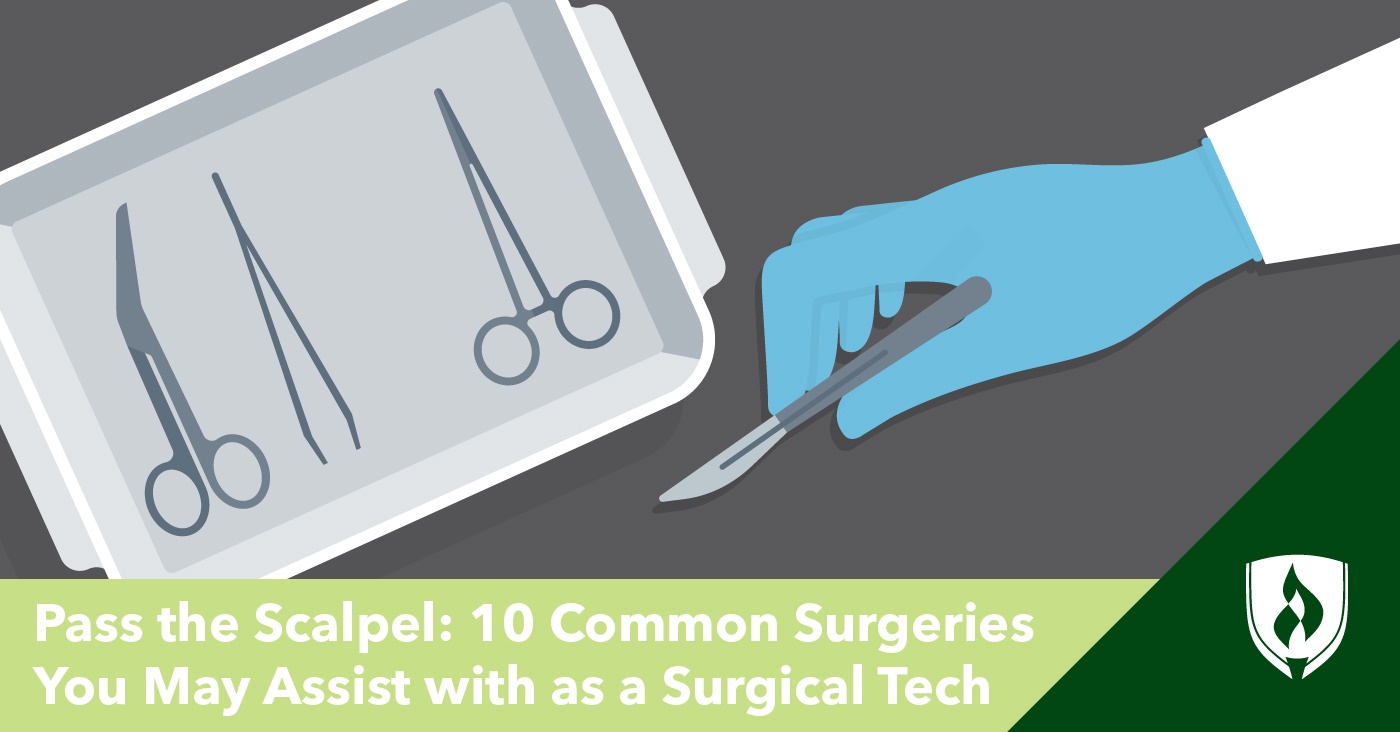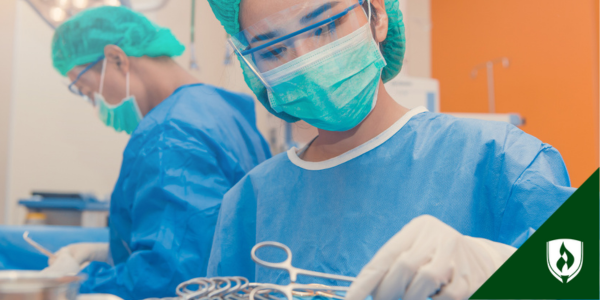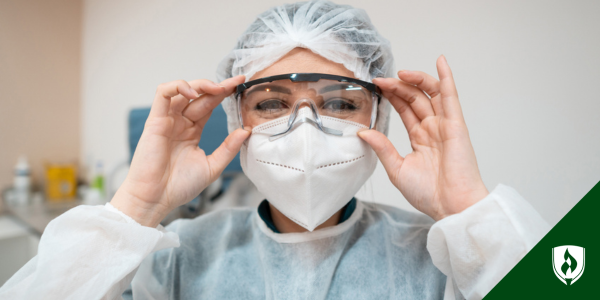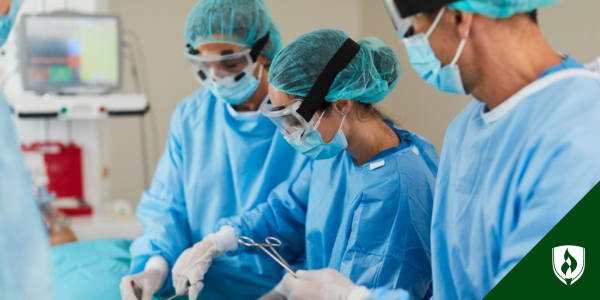Pass the Scalpel: 10 Common Surgeries You May Assist with as a Surgical Tech
By Kirsten Slyter on 06/07/2021

You’ve been intrigued by the operating room (OR) for quite some time. It’s often the focus of highly dramatic medical television shows, but that’s only a small part of what’s caught your interest. You know the healthcare field is a solid place to base a career. That, and the idea of donning those ceil blue scrubs and lending a hand with life-changing procedures as a surgical technologist is a hard one to shake.
Surgical techs are key members of the surgical team who prepare the patient and the OR for surgery. But you may be wondering: What types of surgeries are surgical techs regularly lending a hand with?
Keep reading as we explore ten common surgeries and procedures you may assist with as a surgical technologist.
Exploring the different types of common surgeries you’ll see as a surgical technologist
While many of the surgeries on this list are fairly common, that doesn’t mean they’re a walk in the park. Read on to learn more about what’s typically being accomplished with each procedure.
1. Cardiac catheterization
Cardiac catheterization is a common procedure used to help doctors monitor and treat heart health. This procedure is used to measure the pressure and flow of blood in a patient’s heart, providing valuable information regarding any potential disease of the heart muscle, valves or coronary arteries.
During the procedure, a long, thin tube is interested into an artery or a vein of the arm or the groin and threaded through the blood vessels up to the heart. This technique can be used for inserting a stent or performing a balloon angioplasty, both of which that can improve blood flow and may reduce risk for a heart attack.
2. Hysterectomy
Patients with female sex organs experiencing reproductive health issues, like gynecological cancer or fibroids, may undergo a hysterectomy to remove the uterus (partial hysterectomy) or both the cervix and uterus (total hysterectomy). Depending on diagnostic imaging or surgical findings, a hysterectomy may include the removal of one or both ovaries and their fallopian tubes, called a salpingo-oophorectomy.
This procedure can be performed abdominally or vaginally depending on the size of the uterus or the patient’s diagnosis. Recovery is typically more extensive for patients who undergo an abdominal hysterectomy.
3. Cesarean section
Certainly a rewarding procedure to successfully carry out, a cesarean section (commonly known as a C-section) is a surgical procedure to deliver a baby through an incision in the abdomen and uterus. This procedure is commonly performed when a traditional birth poses risks to the baby or mother. A cesarean section can be either a planned procedure or an emergency surgery if troubles develop during labor.
Most patients will receive regional anesthesia during the procedure as opposed to general anesthesia so they can be conscious to hear their child’s first cry.
4. Cholecystectomy
The name of this procedure might not sound familiar to most, but it refers to the removal of patient’s gallbladder. A patient may need their gallbladder removed for variety of reasons, including issues with gallstones, inflammation, or polyps on the gallbladder. It’s usually done laparoscopically with a tiny video camera and small incisions; however, it can be done with a large incision in the abdomen if needed, though an open cholecystectomy will require a longer recovery time.
5. Bone fracture repair
While many broken bones can heal with the use of immobilizing casts to keep things in place while healing occurs, it’s fairly common for complicated bone breaks to be treated through surgery. These bone breaks require a surgeon to piece together and stabilize broken bones with internal pins, screws and/or plates. These procedures can be fairly complicated, depending on the circumstances of the break—small intricate bones and spiral fractures can get very tricky.
6. Appendectomy
Who knew such a poorly understood piece of our bodies would be at the root of so many surgical procedures? This procedure is often performed as an emergency surgery to treat appendicitis. In this procedure, the surgical team removes the appendix, a small tube that branches off the large intestine on the right side of the body. Appendectomies are often performed laparoscopically, with one to three tiny cuts, but it can also be performed as an open appendectomy, which involves one larger incision. An open appendectomy can become necessary if the appendix has ruptured and the infection has spread—which can lead to very serious complications.
7. Coronary artery bypass graft
With cardiovascular disease being one of the top health issues in the world, it shouldn’t come as a surprise that there’s more than one way for physicians to deal with clogged coronary arteries on this list. Instead of performing a balloon angioplasty like you’d find in a cardiac catheterization procedure, medical practitioners may recommend rerouting blood around the troublesome artery with a bypass made from a healthy blood vessel taken from elsewhere in the body.
In this procedure, the surgeon attaches the ends of the graft blood vessel on opposite sides of the blockage, allowing blood to bypass the problem area within the heart—somewhat similar to a traffic detour for the patient’s blood flow.
8. Joint replacement
Due to trauma or conditions such as osteoarthritis, it is sometimes necessary to replace a joint or a portion of a joint with a prosthesis. An arthroplasty is a surgery where a patient’s joint is replaced, modeled or realigned in order to relieve issues. Hips and knees are most common, though these procedures are also performed on ankles and shoulders regularly.
Joint replacements take several weeks of recovery and extensive physical and occupational therapy, so they’re only considered after medical management, like anti-inflammatory medicines or viscosupplementation injections, fail to significantly improve symptoms.
9. Mastectomy
The term mastectomy is used an umbrella term that covers several techniques for the removal of lymph nodes and breast tissue typically used in order to treat breast cancer. The exact technique that the surgeon uses is dependent on what the previous imaging has shown and how far the cancer has spread in a patient.
Techniques can range from an axillary node dissection, where only lymph nodes are removed, to a modified radical mastectomy, which means removing all entire breast and most of the lymph nodes. If the patient elects to have breast reconstruction, it can sometimes be done immediately after the mastectomy. However, some patients may need to have the reconstruction done separately depending on their treatment plans.
10. Cataract surgery
This unique eye surgery can help patients see more clearly and decrease the glare that cataracts cause. It’s relatively low-risk and is often done without the use of general anesthesia. Instead, patients are just lightly sedated, and local anesthetic is administered to numb the surgical field.
During the procedure, the ophthalmologist will use an ultrasound to break up the cataract and use suction to remove the fragments or simply remove the lens in one piece with a larger incision. After the cataract is removed, an intraocular lens (IOL) is inserted to improve the patient’s vision. Depending on the type, these lenses can help astigmatism or function like bifocal glasses to help the eye focus at varying distances.
Become a key part of the surgical team
These are just a small sampling of common surgeries you may assist with as a surgical technologist. There’s no shortage of exciting life-changing procedures for surgical technologists to help set the stage for. As medical technology and techniques advance, who knows what procedures could quickly become commonplace?
No matter the specific procedures, you may be curious about what a typical day looks like for a surgical technologist. Our article “Surgical Technologist Duties: A Day in The Life” provides a look behind the scenes.
Related Articles:
- A Peek Behind the Curtain: What Are Surgical Tech Clinicals Really Like?
- What is the Surgical Tech Career Path? From Start to Advancement
- 20 Types of Surgeons You Could Work with in the Operating Room
EDITOR’S NOTE: This article was originally published in 2017. It has since been updated to include information relevant to 2021.




